I want to send an email using outlook. The code is as follows:
import smtplib
from email.message import EmailMessage
msg = EmailMessage()
msg['From'] = '*******'
msg['Subject'] = 'Some subject here'
msg['To'] = '********'
msg.set_content('Some text here')
with smtplib.SMTP_SSL('smtp-mail.outlook.com', 587) as smtp:
smtp.login('******', '****')
smtp.send_message(msg)
print('Email sent!')
I get the following error:
---------------------------------------------------------------------------
SSLError Traceback (most recent call last)
<ipython-input-8-4d5956f55c88> in <module>
6 msg.set_content('Some text here')
7
----> 8 with smtplib.SMTP_SSL('smtp-mail.outlook.com', 587) as smtp:
9 smtp.login('sender_email', 'password')
10 smtp.send_message(msg)
~/anaconda/envs/quant2/lib/python3.6/smtplib.py in __init__(self, host, port, local_hostname, keyfile, certfile, timeout, source_address, context)
1029 self.context = context
1030 SMTP.__init__(self, host, port, local_hostname, timeout,
-> 1031 source_address)
1032
1033 def _get_socket(self, host, port, timeout):
~/anaconda/envs/quant2/lib/python3.6/smtplib.py in __init__(self, host, port, local_hostname, timeout, source_address)
249
250 if host:
--> 251 (code, msg) = self.connect(host, port)
252 if code != 220:
253 self.close()
~/anaconda/envs/quant2/lib/python3.6/smtplib.py in connect(self, host, port, source_address)
334 if self.debuglevel > 0:
335 self._print_debug('connect:', (host, port))
--> 336 self.sock = self._get_socket(host, port, self.timeout)
337 self.file = None
338 (code, msg) = self.getreply()
~/anaconda/envs/quant2/lib/python3.6/smtplib.py in _get_socket(self, host, port, timeout)
1037 self.source_address)
1038 new_socket = self.context.wrap_socket(new_socket,
-> 1039 server_hostname=self._host)
1040 return new_socket
1041
~/anaconda/envs/quant2/lib/python3.6/ssl.py in wrap_socket(self, sock, server_side, do_handshake_on_connect, suppress_ragged_eofs, server_hostname, session)
405 suppress_ragged_eofs=suppress_ragged_eofs,
406 server_hostname=server_hostname,
--> 407 _context=self, _session=session)
408
409 def wrap_bio(self, incoming, outgoing, server_side=False,
~/anaconda/envs/quant2/lib/python3.6/ssl.py in __init__(self, sock, keyfile, certfile, server_side, cert_reqs, ssl_version, ca_certs, do_handshake_on_connect, family, type, proto, fileno, suppress_ragged_eofs, npn_protocols, ciphers, server_hostname, _context, _session)
815 # non-blocking
816 raise ValueError("do_handshake_on_connect should not be specified for non-blocking sockets")
--> 817 self.do_handshake()
818
819 except (OSError, ValueError):
~/anaconda/envs/quant2/lib/python3.6/ssl.py in do_handshake(self, block)
1075 if timeout == 0.0 and block:
1076 self.settimeout(None)
-> 1077 self._sslobj.do_handshake()
1078 finally:
1079 self.settimeout(timeout)
~/anaconda/envs/quant2/lib/python3.6/ssl.py in do_handshake(self)
687 def do_handshake(self):
688 """Start the SSL/TLS handshake."""
--> 689 self._sslobj.do_handshake()
690 if self.context.check_hostname:
691 if not self.server_hostname:
SSLError: [SSL: WRONG_VERSION_NUMBER] wrong version number (_ssl.c:852)

